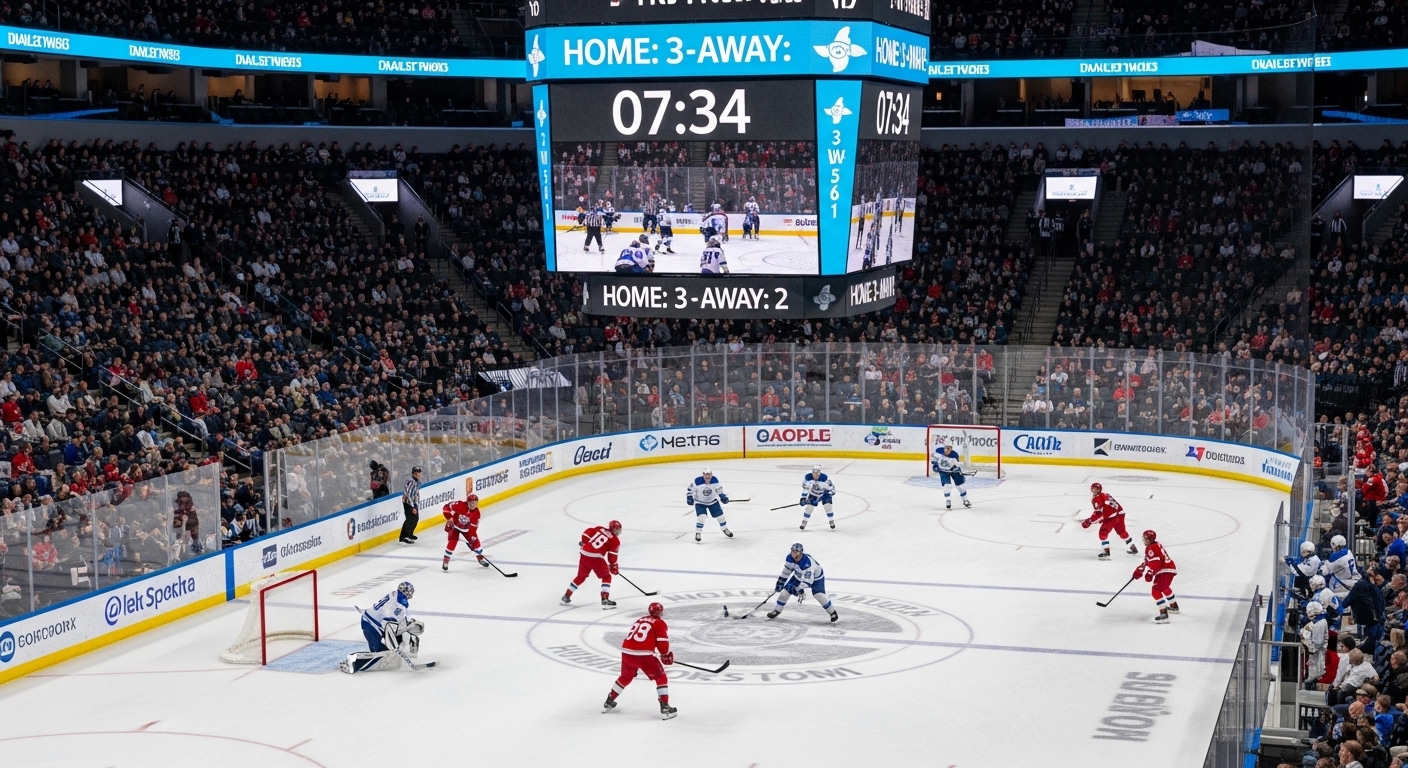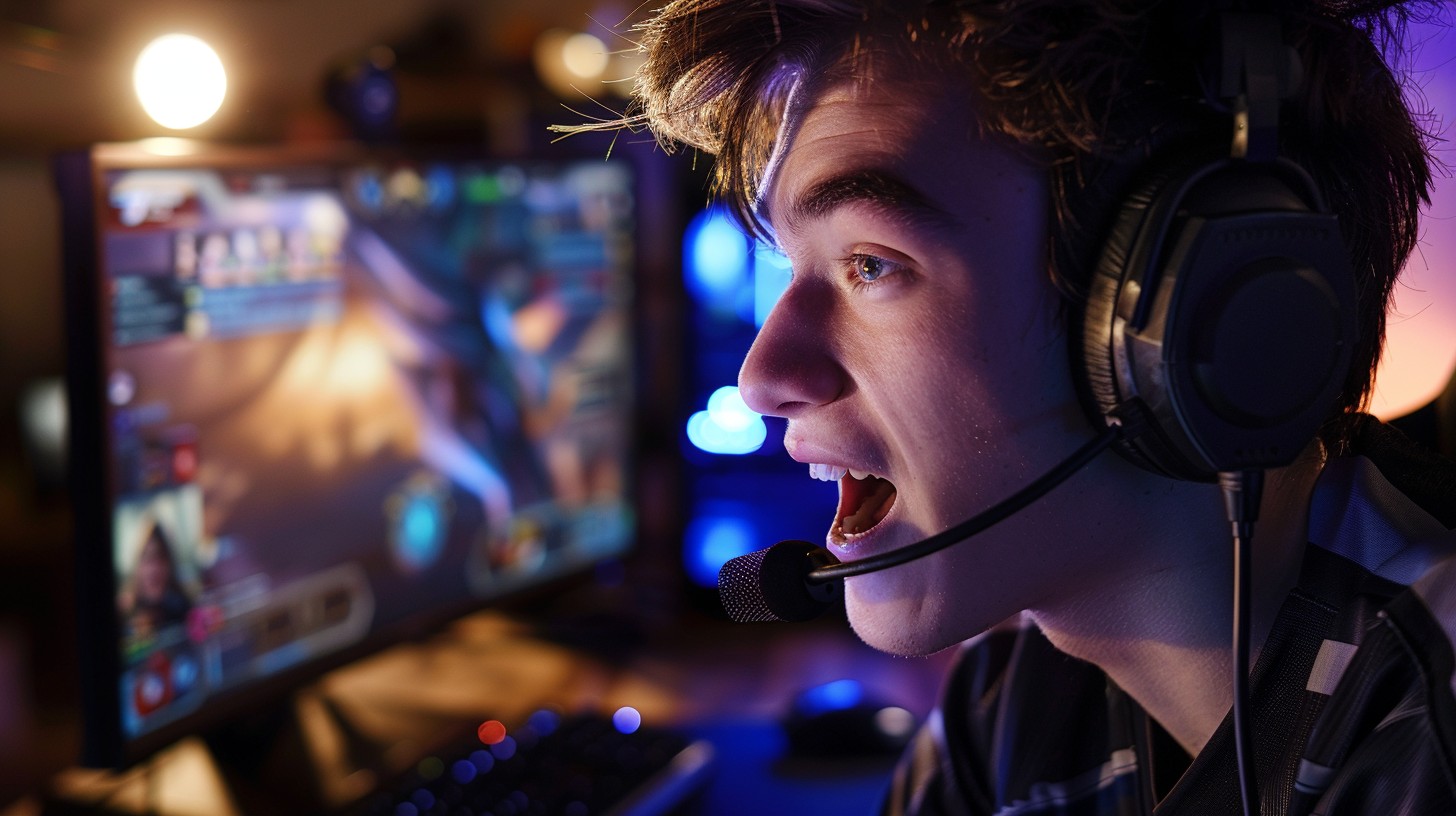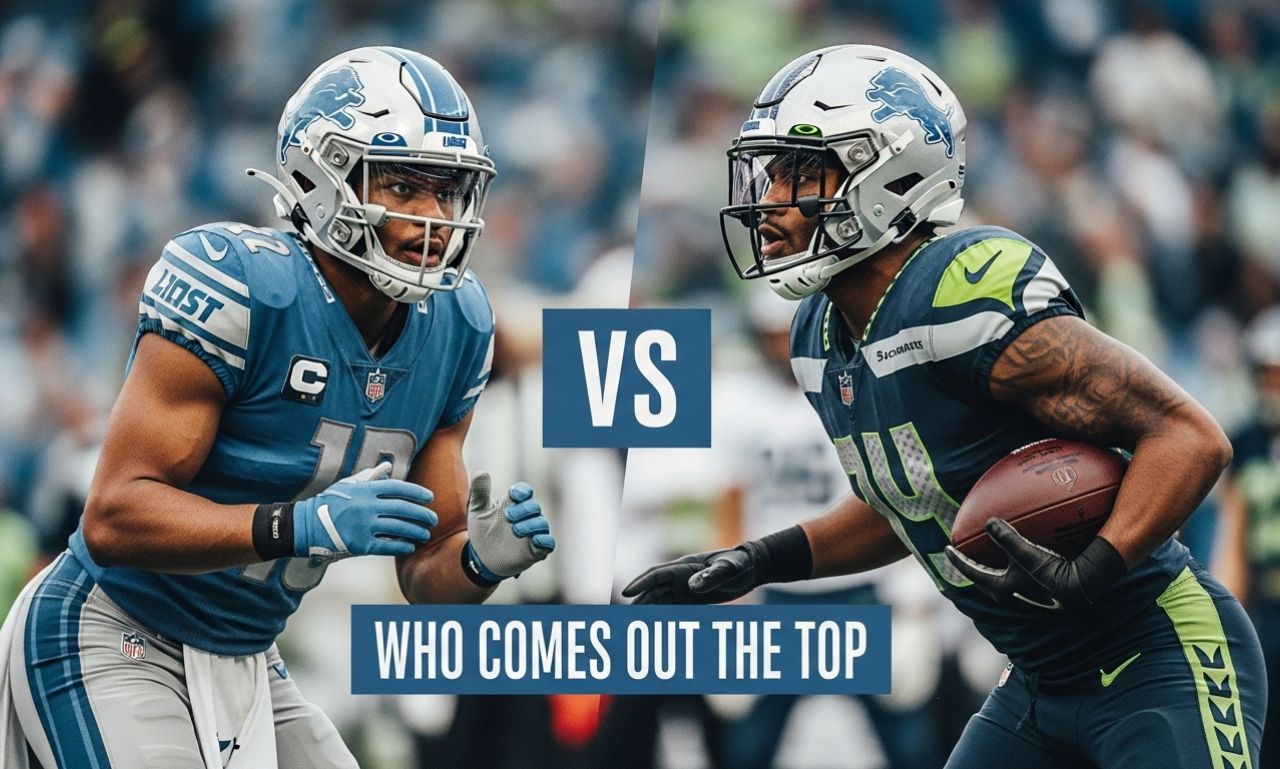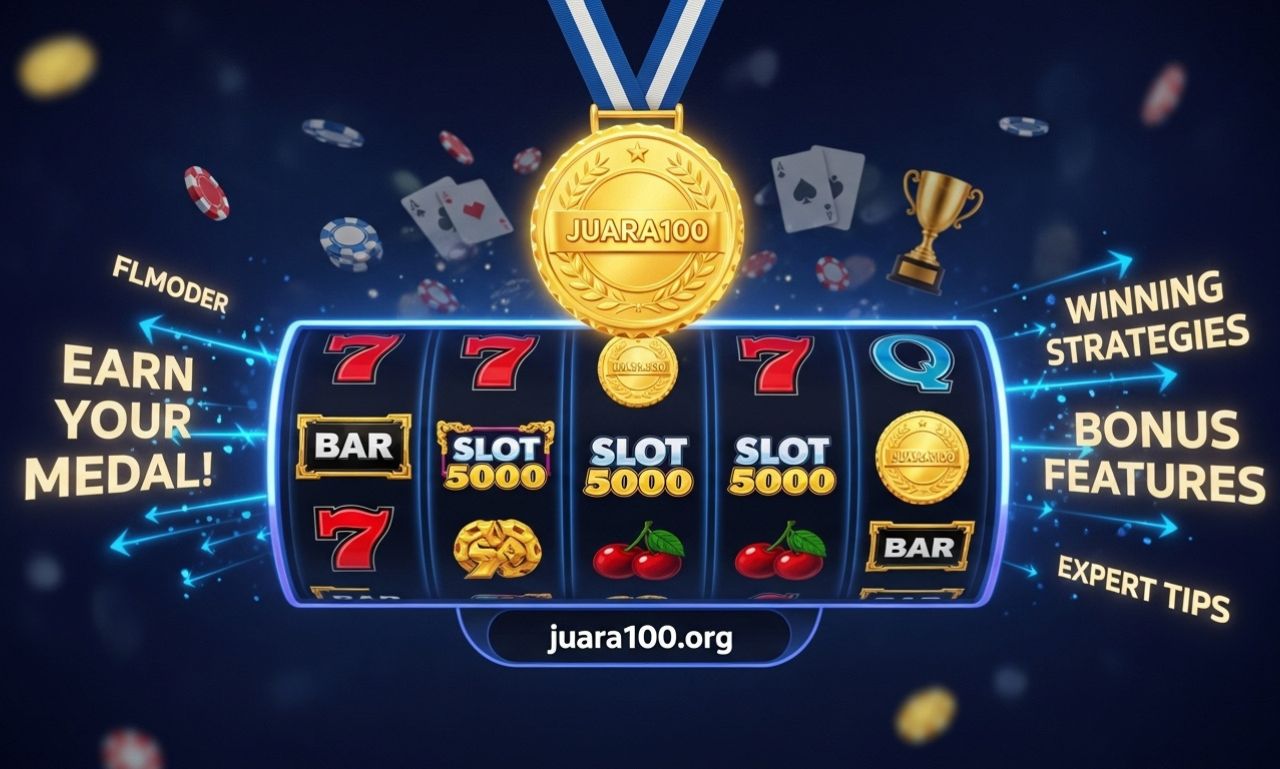Games
How Long Are Hockey Games? A Complete Guide

In today’s fast-paced sports culture, timing matters. Fans plan their evenings around game schedules, athletes train for precise bursts of energy, and broadcasters organize entire programming slots around match lengths. One question often asked by newcomers and seasoned fans alike is: how long are hockey games?
At first glance, hockey seems straightforward—three periods, a clock, and some breaks. But the reality is more complex. From professional leagues like the NHL to Olympic competitions and recreational matches, the actual duration of a hockey game depends on multiple factors: regulation play, intermissions, stoppages, overtime, and even shootouts.
This article explores hockey’s time structure in detail, examines how long games last in different contexts, and explains why understanding the timing matters for fans, players, and organizers alike.
The Basic Structure of a Hockey Game
A standard hockey game is divided into three 20-minute periods of regulation play. Unlike some other sports, the game clock in hockey stops for every whistle, penalty, or pause in play. This means that while a regulation period is 20 minutes on paper, in real time it stretches much longer.
Between each period, there is typically a 15–18 minute intermission. These breaks allow teams to regroup, coaches to adjust strategies, and fans to grab refreshments.
In regulation time alone, a hockey game is 60 minutes of active play. But when you account for intermissions and stoppages, the average NHL hockey game runs about 2 hours and 20 minutes.
Why Hockey Games Take Longer Than the Clock Suggests
So, why does a 60-minute game stretch into more than two hours? The answer lies in hockey’s stop-and-start rhythm.
-
Whistles and Penalties – Each whistle halts the clock, leading to pauses that add up across three periods.
-
Faceoffs – Restarting the game after every stoppage requires setup, adding extra seconds.
-
Commercial Breaks – In professional leagues, TV timeouts extend the total runtime.
-
Overtime and Shootouts – Tied games can stretch beyond regulation.
These elements combine to create a sport where game time and real time diverge significantly.
How Long Are NHL Hockey Games?
The National Hockey League (NHL) is the gold standard for hockey, and fans often ask specifically about its timing. An NHL game typically lasts 2.5 to 3 hours in real time.
Breakdown:
-
Regulation Play: 60 minutes (three 20-minute periods).
-
Intermissions: 34–36 minutes total (two intermissions).
-
Stoppages & Breaks: Approximately 40–60 minutes combined.
-
Overtime & Shootouts (if tied): 5–15 minutes extra.
Thus, if you’re planning to attend or watch an NHL game, expect around three hours from puck drop to final horn.
How Long Are International and Olympic Hockey Games?
International hockey, including Olympic events, follows a similar structure but sometimes varies slightly in stoppage rules and broadcast pacing. Generally:
-
Three 20-minute periods of play.
-
15-minute intermissions.
-
Overtime rules differ—Olympic hockey can have longer overtime periods compared to the NHL.
On average, Olympic hockey games last about 2 hours and 15 minutes.
How Long Are Youth and Recreational Hockey Games?
At the recreational or youth level, game length is often adjusted to fit schedules, ice rental times, and age groups. For example:
-
Youth Leagues: Often three 15-minute periods. Total game time usually runs 1.5 to 2 hours.
-
High School Hockey: Similar to youth, with some leagues using slightly longer periods.
-
Recreational Leagues: Ice rental constraints may lead to “running clocks” where time doesn’t stop during whistles.
These modifications make games shorter and easier to fit into tight community schedules.
The Role of Overtime and Shootouts
One of the biggest variables in determining how long hockey games last is overtime.
-
NHL Regular Season Overtime: 5 minutes of sudden-death 3-on-3 play. If still tied, a shootout follows.
-
NHL Playoff Overtime: Unlike the regular season, playoff games have unlimited 20-minute sudden-death overtime periods until a team scores. This means games can stretch far beyond three hours—some famous playoff matches have lasted over six hours.
-
International Play: Overtime lengths vary depending on the tournament’s rules.
This unpredictability adds to the drama—and the planning considerations—for fans and broadcasters.
Comparing Hockey to Other Sports
To better understand hockey’s timing, it helps to compare it to other major sports:
-
Soccer: 90 minutes of play, plus stoppage time. Real time: ~2 hours.
-
Basketball (NBA): 48 minutes of play, but with timeouts and breaks, games average 2 hours and 15 minutes.
-
Baseball: No game clock. Games typically run 3+ hours, depending on innings.
-
Football (NFL): 60 minutes of play, but real time lasts 3 to 3.5 hours.
Hockey’s average duration of around 2.5 hours makes it one of the more time-efficient sports for fans while still offering plenty of action.
Why Knowing “How Long Are Hockey Games” Matters
Understanding the timing of hockey games isn’t just trivia—it has practical and cultural significance.
-
For Fans: Planning to attend live games, knowing how long it will last is essential for transportation, meals, and family schedules.
-
For Broadcasters: Exact timing allows networks to plan slots, commercials, and post-game shows.
-
For Players: Training regimens are designed around bursts of energy followed by rest, perfectly aligned with the stop-start structure of hockey.
-
For Event Organizers: Arenas schedule back-to-back events, requiring accurate timing to avoid overlaps.
Memorable Long Games in Hockey History
Some games go far beyond the average and become legendary due to their sheer length. For example:
-
2000 NHL Playoffs: Philadelphia Flyers vs. Pittsburgh Penguins lasted over 152 minutes of play—nearly three full games.
-
1936 Detroit Red Wings vs. Montreal Maroons: A playoff marathon with six overtimes, the longest game in NHL history, lasting over 176 minutes of play.
These outliers remind us that hockey, unlike timed sports such as soccer, has built-in unpredictability that can turn an evening game into an all-night saga.
Looking Ahead: Will Hockey Game Lengths Change?
With increasing focus on audience experience, some leagues are considering ways to streamline hockey games. Discussions often centre on reducing intermissions, tweaking overtime formats, or adjusting commercial breaks. However, the core structure of three 20-minute periods is unlikely to change, as it defines the sport’s rhythm and strategy.
As digital viewership grows, leagues may also adopt new broadcast innovations—such as real-time stats and interactive replays—to make game pacing more engaging for fans.
Final Word
So, how long are hockey games? The short answer: about 2.5 hours on average. But the longer story reveals the richness of the sport—the pauses, the intensity of overtime, and the excitement that unpredictability brings. Whether in the NHL, international competitions, or local rinks, hockey’s timing balances action with suspense, making it one of the most thrilling sports to watch.
For fans, players, and broadcasters, understanding game length isn’t just about numbers on a clock—it’s about appreciating the unique rhythm that makes hockey unforgettable.
Games
EtrueSports Code: Essential Strategies for Gamers

In the fast-paced world of gaming, mastering strategy can be the key to success. Enter EtrueSports Code—a framework that elevates your gameplay and enhances your competitive edge. Whether you’re a casual gamer or an aspiring pro, understanding this code can transform how you approach every match. Dive into this guide as we unravel what EtrueSports Code is all about and discover essential strategies that will help you conquer any game with confidence!
What is EtrueSports Code
EtrueSports Code is a framework designed specifically for gamers. It emphasizes the importance of strategy, teamwork, and skill development in competitive gaming.
At its core, EtrueSports Code provides guidelines that help players enhance their performance. This code encourages gamers to think critically about their gameplay mechanics and decision-making processes.
In an ever-evolving digital landscape, understanding this code can lead to significant improvements. Gamers who embrace these principles often find themselves more engaged in both casual and professional environments.
The essence of EtrueSports Code lies not just in winning but also in fostering camaraderie among players. By promoting effective communication and collaboration, it helps build stronger teams capable of tackling any challenge.
Understanding the Basics of Gaming
Gaming is more than just hitting buttons. It’s an immersive experience that combines skill, strategy, and creativity. Each game offers a unique world filled with challenges and opportunities.
At its core, gaming involves navigating different environments while overcoming obstacles. Players need to understand their goals—whether it’s defeating enemies or completing missions. Mastering the basics lays the foundation for deeper strategies later on.
Controls play a crucial role in gameplay dynamics. Familiarity with your character’s movements can be the difference between victory and defeat. Practicing these controls helps build muscle memory, allowing for quicker reactions during intense moments.
Additionally, knowing game genres is vital. Whether you’re into first-person shooters or role-playing games, each genre has distinct mechanics that define how players interact with the virtual space. Understanding these nuances enhances overall performance and enjoyment in any gaming session.
Importance of Strategy in Gaming
Strategy is the backbone of successful gaming. It separates casual players from true competitors. Without a solid plan, even the most skilled player may falter.
Each game presents unique challenges and environments that require tailored strategies. Understanding these dynamics allows gamers to navigate complex scenarios effectively.
Moreover, strategy enhances teamwork in multiplayer settings. Coordinating with teammates ensures everyone is aligned towards a common goal, increasing chances of victory.
Adapting your approach based on opponents’ moves can shift the tide of battle dramatically. Observing their style and adjusting your tactics accordingly often makes all the difference.
In competitive gaming, where every second counts, strategic thinking elevates performance levels significantly. It transforms gameplay into an engaging experience rather than mere button-mashing chaos.
Essential Strategies for Gamers:
Essential strategies can make all the difference in a gamer’s performance. First and foremost, teamwork is crucial. Engaging with teammates enhances communication, leading to synchronized plays and successful outcomes.
Mastering game mechanics is equally vital. Knowing the ins and outs of controls allows for quicker reactions during intense moments. This knowledge can set you apart from opponents who lack familiarity.
Analyzing your opponents provides insights into their playstyles. Adaptability is key; changing your tactics based on what others do keeps them guessing.
Time management also deserves attention. Prioritizing objectives ensures that resources are allocated efficiently, allowing for strategic advantages when it counts most.
Emphasizing these elements will elevate any player’s gaming experience significantly.
Utilizing Teamwork and Communication
Effective teamwork is the backbone of success in gaming. Whether you’re navigating a complex strategy game or engaging in fast-paced battle royales, collaboration makes all the difference.
Clear communication among team members helps build strategies on-the-fly. Use voice chat or text to relay critical information about enemy positions or resource availability. This real-time exchange can shift the tide of any match.
Listening is as essential as speaking. Pay attention to your teammates’ calls and adapt your actions accordingly. A well-coordinated team operates like a finely tuned machine, executing plans seamlessly.
Don’t underestimate non-verbal cues either. Simple pings and gestures can convey messages quickly during intense moments when words might get lost in the chaos.
Fostering trust within your group leads to better performance overall. When players feel comfortable sharing ideas and feedback, it creates an environment where everyone thrives together.
Mastering Game Mechanics and Controls
Mastering game mechanics and controls is crucial for any gamer looking to elevate their skills. Understanding how your character moves, attacks, and interacts with the environment can make a significant difference in gameplay.
Spend time practicing different movements. Whether it’s dodging, jumping, or using special abilities, familiarity breeds confidence. Knowing exactly how each action feels will help you react faster during intense moments.
Experiment with control settings too. Adjust sensitivity levels to find what works best for you. A personalized setup can greatly enhance your precision and overall comfort while playing.
Don’t shy away from tutorials or training modes offered within games. These resources often provide valuable insights into advanced tactics that can sharpen your competitive edge.
Observe others as they play. Analyzing skilled players allows you to identify effective strategies and techniques that may not have been on your radar before.
Analyzing Opponents and Adapting to Different Playstyles
Analyzing opponents is a crucial skill for any gamer. It involves observing their strategies, movements, and habits in real-time. By doing so, you can identify patterns that give you an edge.
Each player has a unique playstyle. Some may rely on aggression while others prefer stealthy approaches. Recognizing these differences helps tailor your strategy against them.
Adaptability is key. If your opponent leans toward aggressive tactics, consider defensive maneuvers or baiting them into traps. Conversely, if they are cautious, apply pressure to force mistakes.
Don’t forget about the mental aspect of gaming. Players often react predictably under stress or after losing a few rounds. Stay aware of their emotional state and adjust accordingly; this insight can turn the tides in your favor.
Practice makes perfect when it comes to analyzing and adapting during gameplay. Over time, you’ll become more adept at reading opponents and reacting swiftly to their moves.
Managing Time and Resources Effectively
Effective time and resource management is crucial for gamers aiming to elevate their performance. Every second counts in a match, so knowing when to attack or defend can make all the difference.
Start by setting clear goals for each gaming session. Focus on specific skills you want to improve or strategies you plan to experiment with. This targeted approach helps streamline your practice.
Resource management involves understanding what you have at your disposal—be it health points, ammunition, or special abilities. Make decisions that maximize these resources during gameplay.
Prioritize tasks based on urgency and importance within the game context. Sometimes it’s better to conserve energy rather than go all out if victory is just around the corner.
Stay adaptable; plans may change as games evolve. Being flexible allows you to respond effectively without wasting precious time or resources in critical moments of play.
Tips from Professional Gamers
Professional gamers often share valuable insights that can elevate your gameplay. One key tip is to maintain a strong mental game. Staying calm under pressure allows for better decision-making.
Another essential piece of advice is to focus on positioning. Whether you’re in an FPS or strategy game, being aware of your surroundings gives you the upper hand against opponents.
Practice makes perfect, but it’s also important to analyze your replays. Many pros review their performances to identify mistakes and improve specific skills.
Never underestimate the power of community resources. Engaging with forums and watching streams can provide new perspectives that enhance strategic thinking.
Implementing EtrueSports Code in Different Types of Games
Implementing EtrueSports Code across various gaming genres can enhance your overall performance. Different games require tailored strategies to maximize effectiveness.
In team-based shooters, communication and teamwork are crucial. Use voice chat or in-game signals to coordinate tactics with teammates. This fosters synergy, leading to better outcomes.
For strategy games like MOBAs, understanding character abilities is vital. Analyze each hero’s strengths and weaknesses while adapting your gameplay accordingly. Flexibility in approach often secures victory against opponents.
Single-player games call for resource management skills. Focus on optimizing item usage and planning ahead for challenging encounters. This ensures you’re always prepared for whatever lies ahead.
Role-playing games necessitate a deep dive into character development. Invest time in crafting builds that complement your playstyle while also anticipating enemy moves during battles.
Adopting the EtrueSports Code principles will undoubtedly set you apart from casual gamers across all platforms.
Conclusion
Understanding and implementing the EtrueSports Code can significantly enhance your gaming experience. It’s not just about playing harder; it’s about playing smarter. By focusing on teamwork, mastering game mechanics, and adapting to various playstyles, you position yourself as a formidable player in any game.
Drawing insights from professional gamers further enriches your strategy toolkit. They’ve honed their skills through rigorous practice and understanding of the game’s intricacies. Their tips offer valuable perspectives that can be applied across different genres.
The application of EtrueSports Code isn’t limited to one type of game either. Whether you’re diving into competitive shooters or engaging in strategic RPGs, these principles remain relevant. Embrace this code, refine your strategies, and watch how it transforms your gameplay for the better.
Games
Detroit lions vs seahawks stats: Who Comes Out on Top?

As the NFL season heats up, fans are eagerly anticipating one of the most exciting matchups on the calendar: the Detroit lions vs seahawks stats. Both teams have shown flashes of brilliance this season, and their upcoming clash promises to be a thrilling contest filled with high stakes and fierce competition. The roar of the Lions meets the battle cry of the Seahawks—a showdown that brings together fan bases eager for victory.
But what does history tell us about these two franchises? How do their stats stack up against each other? Whether you’re cheering from Ford Field or Lumen Field, understanding key statistics can elevate your game-day experience. Dive into our detailed analysis as we break down everything you need to know about Detroit Lions vs Seahawks stats ahead of this highly anticipated matchup.
What is Detroit lions vs seahawks stats?
When discussing Detroit Lions vs Seahawks stats, we dive into an intriguing comparison of two iconic franchises. Each team brings its own unique strengths and weaknesses to the field.
The history between these teams has produced interesting matchups over the years, showcasing both thrilling victories and closely contested battles. Fans often analyze past performances to gauge future outcomes.
Statistically, key metrics such as points scored per game, yardage gained, and turnovers can paint a clearer picture of what to expect when they clash.
Offensive prowess is essential for both sides; however, defensive capabilities also play a significant role in determining who prevails on game day.
Understanding these statistics helps fans appreciate the nuances of each matchup while providing insight into player performance trends that could influence the game’s outcome.
Season records and previous matchups
The Detroit Lions and Seattle Seahawks have a storied history, with several memorable matchups. As of the current season, the Lions are striving to build on their recent successes. They’ve shown flashes of brilliance but remain inconsistent.
On the other hand, the Seahawks have been a competitive force in the NFC West. Their record reflects resilience and adaptability under pressure throughout this season.
Looking back at previous encounters, both teams have experienced highs and lows against each other. Some matchups were nail-biters that could have gone either way while others leaned decisively toward one side.
Recent games showcase how styles differ between these two franchises. The Lions often rely on their explosive offense, whereas Seattle brings a balanced approach with strong defensive tactics paired with an effective ground game. Each matchup tells its own story, leading fans to wonder what’s next when they clash again on the field.
Key players for each team
The Detroit Lions boast a dynamic offense, with Jared Goff leading the charge. His ability to read defenses and make quick decisions has transformed their passing game. With strong weapons like Amon-Ra St. Brown, he can stretch the field effectively.
On defense, linebacker Malcolm Rodriguez stands out. His tackling skills and football IQ allow him to disrupt opposing plays consistently.
For the Seattle Seahawks, quarterback Geno Smith has been impressive this season. He combines experience with playmaking ability, making him a vital part of their success.
Wide receiver DK Metcalf is another key player for Seattle. Known for his speed and size, he poses a significant threat downfield.
Defensively, cornerback Tariq Woolen brings athleticism and ball-hawking skills that can change games in an instant. Each player’s performance could be pivotal in determining who comes out on top in this matchup.
Offensive and defensive statistics
The offensive statistics for both teams reveal interesting dynamics. The Detroit Lions have shown a knack for explosive plays this season, boasting a strong passing game. Quarterback Jared Goff has been efficient, connecting with key receivers to rack up impressive yardage.
On the other hand, the Seattle Seahawks rely heavily on their ground attack. With Kenneth Gainwell leading as the primary back, they’ve consistently churned out rushing yards. This balanced approach keeps defenses guessing and opens lanes for their receiving corps.
Defensively, both squads present unique challenges. The Lions struggle against the pass but excel in creating turnovers, often shifting momentum in crucial moments. Meanwhile, Seattle’s defense prides itself on its ability to stifle opposing rushers while pressing quarterbacks into hurried decisions.
These contrasting styles will be pivotal as each team seeks to exploit weaknesses and assert dominance on game day.
Predictions for the game
As the game day approaches, fans are buzzing with excitement about what could unfold. The Detroit Lions boast a resilient offense that has shown flashes of brilliance this season. Their ability to score quickly could pose a challenge for the Seahawks’ defense.
On the other hand, Seattle’s dynamic playmakers have been consistent in their performances. If they can establish a strong running game early on, it might set the tone for an explosive afternoon.
Weather conditions may also come into play; unpredictable elements often affect scoring and strategy. Both teams will need to adapt swiftly to maintain momentum throughout the match.
In tight contests like these, turnovers become critical. Whichever team can capitalize on mistakes will likely gain a significant edge as time runs down in the fourth quarter. Fans should brace themselves for an exhilarating showdown filled with surprises and thrilling plays!
Factors that could impact the outcome
Weather conditions can play a significant role in any NFL matchup, including the Detroit Lions versus the Seattle Seahawks. Rain or snow could affect passing accuracy and ball handling.
Injuries are another critical factor. Key players missing from either lineup can shift the balance of power dramatically. Both teams need to manage their rosters carefully as game day approaches.
Home-field advantage is worth noting too. The Seahawks often thrive in their loud stadium, making it challenging for visiting offenses to communicate effectively.
Coaching strategies will also shape this contest. Adjustments made during halftime could determine which team capitalizes on opportunities or mitigates weaknesses.
Momentum matters. A recent winning streak or tough loss impacts player morale and confidence heading into this pivotal clash. Each of these elements will weigh heavily on the outcome of the game between these two competitive teams.
Final thoughts on the matchup
As the Detroit Lions gear up to face the Seattle Seahawks, fans can expect an electrifying showdown. Both teams possess unique strengths that could tip the scale in unexpected ways.
The Lions have shown resilience this season. Their offensive play has been dynamic, showcasing a blend of speed and strategy. Meanwhile, the Seahawks are no strangers to high-pressure situations; their experience could be crucial in tight moments.
Matchups often come down to individual performances as well. Key players on both sides will need to step up and deliver if they want their team to secure a victory.
Weather conditions and home-field advantage may also influence gameplay significantly. The roaring crowd at Lumen Field or Ford Field can elevate performance levels dramatically.
This clash promises excitement for fans everywhere, making it one not to miss as each team’s playoff aspirations hang in the balance.
Conclusion
The matchup between the Detroit Lions and Seattle Seahawks promises to be an exciting clash of skill, strategy, and determination. Both teams have shown strengths throughout the season, backed by key players who can change the game’s momentum at any moment.
As we analyze detroit lions vs seahawks stats, it becomes clear that both squads have their unique approaches—whether it’s explosive offense or staunch defense.
Key player performances will be critical in determining the outcome. Injuries and weather conditions could also play a pivotal role as kickoff approaches.
Fans are eager to see how this contest unfolds. Will the Lions capitalize on their ground game? Or will the Seahawks leverage their aerial attack?
Regardless of what happens on game day, one thing is certain: This matchup is bound to provide thrilling moments for all fans watching. Mark your calendars; you won’t want to miss it!
Games
Slot 5000 juara100.org medal: Everything You Need to Know About Earning

Welcome to the thrilling world of Slot 5000 juara100.org medal! If you’re looking for a gaming experience that blends excitement with the chance to earn big rewards, you’ve come to the right place. This popular online slot game is capturing the attention of players everywhere and offers more than just spinning reels. Whether you’re a seasoned pro or a curious newbie, understanding what makes Slot 5000 tick can elevate your gameplay.
Join us as we dive into everything you need to know about earning that coveted medal in Slot 5000. From strategies and features to tips on maximizing your earnings, this guide will equip you with all the insights necessary for an exhilarating adventure in this virtual casino realm. Ready? Let’s roll those reels!
What is Slot 5000 juara100.org medal?
The Slot 5000 juara100.org medal is a digital reward designed for players who engage with the Slot 5000 gaming experience. It signifies achievement and commitment within this popular online casino game platform.
Earning the medal involves reaching specific milestones, such as completing challenges or accumulating points through gameplay. Players can display their medals on profiles, showcasing their skills and dedication to other gamers.
This unique feature not only enhances player engagement but also fosters a sense of community among participants. By working towards earning the medal, players often find themselves motivated to explore various aspects of the game more deeply.
With its striking design and symbolic value, the Slot 5000 juara100.org medal has become an emblem of prestige within the gaming world, appealing to both casual gamers and seasoned pros alike.
How Does Slot 5000 Work?
Slot 5000 operates on a sophisticated random number generator (RNG) system. This technology ensures that each spin is entirely independent of the last, giving every player a fair chance.
The game features multiple paylines and symbols, all designed to enhance your gaming experience. Players can choose their bet sizes before spinning the reels, allowing for flexible wagering options.
When you hit a winning combination, the software calculates your payout based on the symbols aligned and your wager amount. Special symbols like wilds or scatters can unlock unique bonuses and features too.
Understanding these mechanics is essential for maximizing potential earnings. Familiarize yourself with how different symbols interact; this knowledge could be key in developing effective strategies as you play Slot 5000.
Strategies for Winning at Slot 5000
Winning at Slot 5000 requires a mix of luck and strategy. Start by familiarizing yourself with the game’s paytable. Understanding which symbols hold the most value is crucial.
Next, consider your betting range. Adjust your bets according to your bankroll while maximizing potential payouts. Smaller, consistent bets can sometimes yield better returns than risking large sums all at once.
Also, take advantage of any available bonuses or promotions offered on juara100.org. These can significantly boost your chances.
Timing plays an essential role too; try playing during off-peak hours when fewer players are online, increasing the odds in your favor.
Know when to walk away. Set limits for both wins and losses to keep your gaming experience enjoyable without financial stress.
The Importance of Managing Your Bankroll
Managing your bankroll is crucial when playing Slot 5000 on juara100.org. It ensures that you can enjoy the game without risking more than you can afford to lose.
Setting a budget before you start helps maintain control. Decide how much money you’re willing to spend and stick to it, regardless of wins or losses.
Tracking your spending adds another layer of awareness. Knowing where your funds go allows for smarter decisions during gameplay.
Consider using smaller bets initially. This strategy prolongs playtime and increases chances of hitting a winning streak while minimizing risks.
Don’t chase losses, as this often leads to overspending. Instead, recognize when it’s time to step back and reassess your approach.
By managing your bankroll effectively, you set yourself up for a more enjoyable experience with Slot 5000 while maximizing potential earnings over time.
Understanding the Different Features and Bonuses of Slot 5000
Slot 5000 juara100.org offers a variety of features that enhance the gaming experience. Players can expect vibrant graphics and immersive sound effects that draw you into the game.
One standout feature is the bonus rounds, which can trigger unexpectedly during gameplay. These rounds often provide players with free spins or multipliers, amplifying potential earnings.
Progressive jackpots are another enticing aspect. As players wager, a portion contributes to this growing jackpot pool, offering life-changing payouts for lucky winners.
Wild symbols play a crucial role as well. They substitute for other icons to create winning combinations, elevating your chances of scoring big wins on any spin.
Additionally, many games within Slot 5000 offer themed events and seasonal promotions. These keep gameplay fresh and exciting while providing opportunities for extra rewards when participating in special challenges or tournaments.
Tips for Maximizing Your Earnings on Slot 5000
To maximize your earnings on Slot 5000, start by understanding the game’s mechanics. Familiarize yourself with paylines and how different symbols function.
Next, consider placing bets strategically. Start small to gauge the game’s rhythm before increasing your stakes. This can help you manage risks effectively while exploring potential wins.
Utilize bonuses whenever possible. Look for promotions or in-game rewards that boost your bankroll without additional costs.
Stay disciplined with a budget. Set aside funds specifically for gaming and stick to that amount—this prevents overspending during exciting moments.
Keep track of your gameplay patterns. Noting which strategies work best will refine your approach over time and enhance overall performance on Slot 5000.
Is Slot 5000 Worth Playing?
When considering whether Slot 5000 is worth your time, it’s essential to weigh the potential rewards against the gameplay experience. Many players are drawn in by its vibrant graphics and engaging themes. The excitement of spinning the reels can be a thrilling escape.
The game offers various features that enhance playability. Bonus rounds and free spins can significantly boost winnings, making each session potentially lucrative.
However, it’s crucial to approach with realistic expectations. While some players walk away with impressive earnings, others might find their luck runs dry.
For those who enjoy testing their strategies and trying their luck, Slot 5000 provides ample opportunity for both entertainment and profit. Engaging with this slot could lead to memorable moments filled with anticipation as you chase after those big jackpots.
Conclusion
The Slot 5000 juara100.org medal presents an exciting opportunity for players looking to enhance their gaming experience. Understanding the mechanics behind this slot game is essential. It not only adds a layer of strategy but also maximizes your chances of earning.
Implementing effective strategies while managing your bankroll can significantly impact your success. The engaging features and bonuses available in Slot 5000 make each spin thrilling, providing ample opportunities to boost earnings.
Whether you’re a seasoned player or just starting, exploring the various aspects of Slot 5000 can lead you on a rewarding journey filled with excitement and potential profits. Dive into the world of Slot 5000 juara100.org medal today, and see where luck takes you!
-

 TOPIC2 months ago
TOPIC2 months agov4holt: Revolutionizing Digital Accessibility
-

 TOPIC4 months ago
TOPIC4 months agoMolex 39850-0500: An In-Depth Overview of a Key Connector Component
-

 TOPIC2 months ago
TOPIC2 months agoMamuka Chinnavadu: An Exploration of Its Significance and Cultural Impact
-

 TOPIC2 months ago
TOPIC2 months agoGessolini: Minimalist Aesthetic Rooted in Texture
-

 TOPIC4 months ago
TOPIC4 months agoDorothy Miles: Deaf Poet Who Shaped Sign Language
-

 TOPIC3 months ago
TOPIC3 months agoArnav Deepaware: A Rising Computer Scientist and Innovator
-

 TOPIC4 months ago
TOPIC4 months agoManguonmienphi: Understanding the Concept and Its Impact
-

 blog2 months ago
blog2 months agoBlack Sea Body Oil: A New Standard in Natural Skincare
